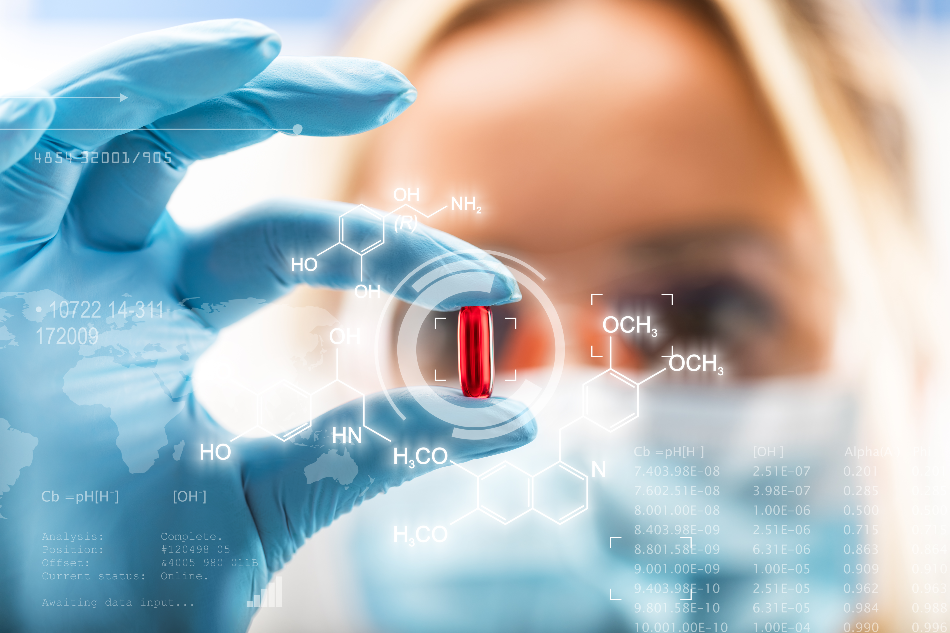
Oleksiy Mark / Shutterstock
The rapid developments in computers, digital cameras, and software have triggered the practice of image analysis in pharmaceutical industries. In 1985, pharmaceutical laboratories started using microscopes integrated with software and cameras. By 1995, scientific instrument companies began marketing image analysis systems for the particle characterization of both suspensions and powdered samples.
Image analysis systems can be categorized as,
- Static image analysis: This system of image analysis measures samples mounted on a slide and moves it by an automated stage. A microscope and a digital camera collect an image of the particles present on the slide each time the stage stops during a scan. This image provides accurate information about the particle size, shape, and distribution ranging between 0.5 to 1000 µm.
- Dynamic image analysis: This system of image analysis measures the samples that flow through a cell or in front of the optical lens. The microscope and digital camera collect the images of particles with a strobe or through timed image captures.
Development of Chemical Imaging
One advancement in image analysis is Chemical Imaging (CI). Chemical Imaging is an emerging technique that binds conventional imaging and spectroscopy to gain both spatial and spectral information about an object. A combination of vibrational spectroscopic methods (Near InfraRed and Raman Spectroscopy) and imaging has proved to be an immensely useful technique in the characterization of biomolecules. It is also used in process monitoring and quality control in multiple stages of drug development. CI can impart a complete description of an ingredient’s concentration and distribution. It can analyze samples in its varied forms, i.e., homogenous solids, semi-solids, powders, suspensions, and liquids.
Scientists can derive a wealth of information by studying the images of the cultured cells/biomolecules. High content analysis (HCA) has now emerged as a vital tool to specifically analyze image data and convert these complex morphological parameters extracted from individual cells into a relatively simple numerical output. This allows researchers to rapidly identify cellular phenotypes.
HCS is now widely used in the pharmaceutical industry for cytotoxicity and apoptosis studies. However, success is only guaranteed if the image analysis software is able to deliver a truly accurate representation of cellular morphological parameters which is highly dependent on the quality of the initial images. Manual capture results in better quality images, compared to automated capture, because of autofocus and parallel acquisition. Automated capture often leads to blurry images that need to be pre-processed before any quantitative information can be extracted. Typically, pre-processing involves removing background signals, extracting individual cells followed by identifying and quantifying morphological features.
Different Types of Image Analysis Software
There are rich programming languages that help developers in designing image analysis software. Programming Languages including C/C++, Java, and Matlab are well established for providing routines for image processing applications, visualizing and developing algorithms. Some of the image analysis software used in the pharmaceutical industry are discussed below:
CellProfiler is a free cell image analysis software that is designed for specific use with multidimensional data from high-throughput experiments. It also contains a supervised machine learning system that can be trained to recognize complicated and subtle phenotypes, enabling the automatic scoring of millions of cells.
DetecTiff is a newly reported image analysis software that can be used for automated object recognition as well as quantification of digital images. It uses template-based processing for quantitative analysis, with algorithms for structure recognition based on intensity thresholding and size-dependent particle filtering.
BioImageXD is open-source software for image analysis and processing. It is designed to work with single or multi-channel 2D, 3D and 4D (time series) image data.
Scan^R Analysis is a proprietary analysis software from Olympus Soft Imaging Solutions. Initially, it was designed for use with image data acquired on Olympus Scan^R automated screening microscopes. However, later it was used to handle large data sets from other high content systems. The most recent release of this software also has inbuilt procedures for performing time-resolved assays in living cells.
Cellenger is commercial software that is designed for HCS applications.
Conclusion
The characterization of biomolecules and analysis of cell culture are the two integral procedures of the pharmaceutical industry. The rapid development in the image analysis, interlinked with the improved software systems has enabled biologists to analyze high volumes of HCS data and characterize and quantify the biomolecules more accurately. Thus, this technique has proved to be a great boon to the pharmaceutical sector.
Disclaimer: The views expressed here are those of the author expressed in their private capacity and do not necessarily represent the views of AZoM.com Limited T/A AZoNetwork the owner and operator of this website. This disclaimer forms part of the Terms and conditions of use of this website.